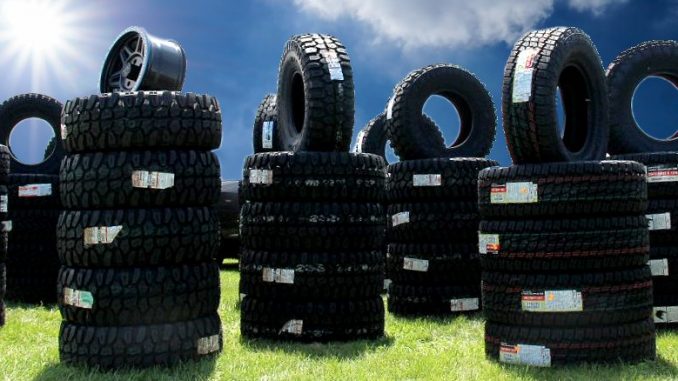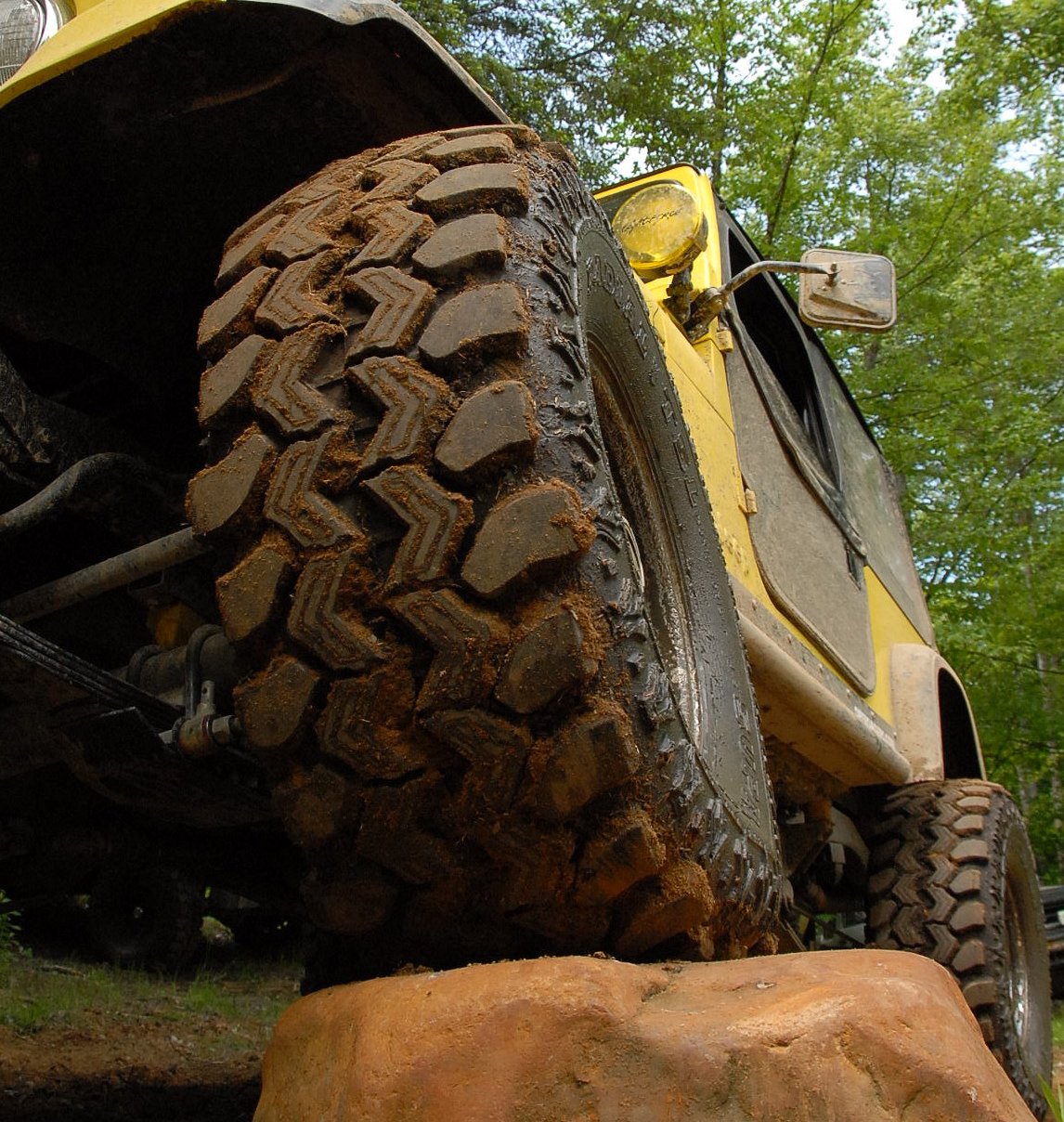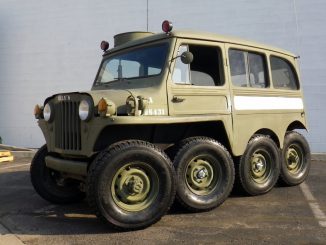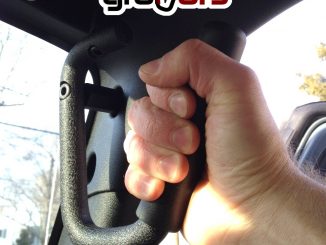
★★★ No Nonsense breakdown on shopping for Mud Tires ★★★
Rewind back a few decades when there were only a few good choices in serious offroad tires and it was easy to make a decision. Today, things are different. Tires are more complex and the tire market more competitive. The advent of computer aided drawing had given birth to a whole new generation of offroad tires designed with specific purposes in mind. Add to that a multitude of tire manufacturers all wanting a piece of the expanding mud tire market and you have LOTS of choices in mud terrain, all terrain and any terrain tires.

All of the manufacturers want you to believe that they have THE best off-road tire on the market so they can get your business. So how do you weed through all of the options and find the tire that you’re going to be happy with and fits your budget. With so may to choose from, it’s easy to make a poor decision that you’ll have to live with for the life of your tire or until your budget will allow for another big expensive purchase again. We think this article will help. This is a no nonsense breakdown of things to consider before you dump your hard earned cash into a set of off-road tires.
Here is a set of Important Questions to ask yourself:
What is your budget? This might be your #1 limiting factor. Sure you’d love to put that set of 37 inch Nitto Mud Grapplers on your beater 4×4, but at $475 a tire, you might think twice unless you have money to burn. So you may want to start with a limit on how much you’ll spend in total. When considering the budget, don’t overlook some of those easily forgotten costs like your spare tire (an automatic locker needs tires of equal size), new rims, a lift kit if the size you want doesn’t fit, the cost of shipping the tire to you, mounting and balancing all of the tires, taxes, transfer of your expensive TPM sensors (Tire Pressure Monitoring) and whatever else might pop up. So start by getting a general budget figure in your head if that’s a concern to you.
What size tire are you looking for? You ask most 4×4 owners looking for tires and they’re tell you they want to go with taller tires than what they currently have. And why not, taller equals more clearance, you sit higher and it looks great. But be sure you do your research. Dependent on the size you want to go for, there’s a good chance you’ll need to do further modification to fit those tires under your fenders. Check charts such as this tire fitment chart or thisTire size Guide to get a general idea if your choice in tire will clear your fenders. Always be sure to consider a fully articulated suspension where the tire is stuffed into the wheel well. The last thing you want to do is buy a brand new set of mud tires, take them offroad and put a big gash in the sidewall all because they didn’t clear the fender.
Optimal Power Band, Gear Ratio vs. Tire Size. Besides clearance, taller tires also change your power band and where you have optimal power at a given rpm. Put simply, a taller tire will cause you to run at a lower RPM at a given speed. Depending on your current axle gear ratio, a taller tire may cause your engine to bog down excessively and may reduce fuel efficiency and performance on and off-road. This in turn can lead to the feeling of under power and excessive use of your clutch. Refer to this gear ratio chart which will help you compare tire sizes to a given axle gear ratio.
What is the purpose? Tires constructed to handle offroad conditions come in a wide variety of designs. They range from borderline road tires, to light all-terrain to desert terrain, to the serious mud and rock crawling competition grade tires. Realistically you want a tire that covers the variety of terrain that it will see. Don’t overlook the fact that you may spend the majority of driving time on the road with the occasional offroad use. Factor the qualities of a good road tire, good wear and good on-road traction in wet weather by looking at tires that have sipes, which will improve wet weather traction. The tire that may be the all-star in the mud bog, probably won’t do so well going down the highway at 65 mph and those super tacky soft rubber tires that are awesome on the rocks may not last very long as the road eat up the soft compounds like a pencil eraser on sandpaper. Beyond highway, what type of offroad terrain will you drive on primarily? Rocks? Better read the reviews on sidewall damage and the durability of the tread. Rocks are pretty rough on your average mud tire. Mud? How well do they clear mud out of the tread voids? Desert? How well do they do at flotation on soft sand? Do you drive on a variety of these terrains? Maybe what you’re looking for is a moderately aggressive mud tire, or one of the more aggressive All Terrain type tires.
Do you need rims? Another consideration that comes with changing your tire size is the rim on which it’s mounted. An increase in tire height usually means an increase in rim size, especially over stock tires. Always pay attention to the minimal rim size for the tire you want and never under-size your rim. If it turns out you do need rims, MAKE sure they clear things like break calipers and suspension components. Review the backspacing requirements for your vehicle.
See Wheel Terminology for more information on understanding rims.
Educate yourself on tire construction. A little knowledge can go a long way. Knowing what the difference between a radial tire and a bias ply tire is as critical as knowing the difference between an automatic and a manual transmission. Knowing what sipes and voids are and how they improve your traction can help you visually look at a tire and have some insight into what it will do offroad. Knowing what the difference between tread plys and sidewall plys could mean the difference between blowing out a tire or having a great day on the trail. Info like how to read the sidewall of a tire and how to decipher the age of a tire is basic information that will make you a better buyer. Also knowing how to convert P-Metric Tire Sizes into Inches can be helpful when you’re shopping around comparing one tire to another. For more on tire construction, see this tire tech page.
Avoid shopping by appearance alone. There are a lot of really cool looking tires out there on the market. But looks are not always equal to performance on road and off road. A lot of times, that is what you are paying for, the look. Get past the look and shop for quality and tires with favorable reviews. Long after you get used to how they look, you’ll be driving on these tires.
Avoid the Hype. Once you have a general idea for what your looking for now is the time to start shopping. The number one thing to avoid is the marketing claims that “this” tire is the best on the market. Avoid reading the manufacturers ads that make all the claims, they’ll cloud your judgment. Your best tool for getting a feel for finding the difference between quality at a bargain and over-prices tires or tires that fall way below your expectations is opinions of other people using the same tire. Read reviews of the tires you’re considering. Visit bulletin boards and join discussions on tires. Ask your friends and others on the trail. When you see a rig doing what you want to do and see their tires perform, ask them what they think of their tires. Opinions of people who actually use the tire is by far the most valuable tool for making a choice.
When shopping, do plenty of price comparisons and always factor in shipping costs into your final cost. Call around and ask tire shops for their best price they can offer on a specific set of tires. Be honest and let them know what other prices you have acquired for the same set and see if they are willing to match or beat that price. A lot of tire shops are willing to work with you to get your business.
After you make your purchase, practice good tire maintenance. You want to get the most out of your investment so follow a few basic tire maintenance rules. Number one, always drive on the road fully inflated. Yes, you’ll be airing down for the trail but ALWAYS air up afterwards for your daily driving. The number one killer of tires driven on the road is under-inflation. Driving on an under-inflated tire fatigues the tire and causes excessive heat and tire separation. To avoid tire failure, air up to the recommended PSI for your daily driving. For long-term even tire wear, rotate your tires periodically.
Lastly make sure you do the offroad tire community a service and share your opinions of your mud tire purchase. Leave reviews and post your opinion on bulletin boards. Ultimately its the end user’s opinion that really matters. © Offroaders.com
© Offroaders.com




Ive had many different mud tires and still haven’t found one I truly love, in my experience Toyo open country wear out way to fast and when taking in through mud the tires don’t self clean, meaning mud cakes up until you have slicks. Fury is ok for the money I’ve gotta many miles out of them my only complaint is they are a much narrow looking tire but still a really good one. Nitto has been another really good one but I I cant afford them anymore the one thing about them is the road noise is ridiculously loud
The tires on off road vehicles always look different, and now I know why. I like how you said to keep in mind that the tires will mostly see normal roads, with the occasional off road trip. I think it’d be a lot of fun to get into off roading, but it wouldn’t be very often.
Thanks for the information about choosing mud tires. I have been talking about turning my vehicle into an off-roading machine for a while. I am finally going to buy some mud tires, but I haven’t found the right set yet. Thanks for mentioning to do a lot of price comparisons and always to factor shipping cost into it. I will definitely call around and see who can give me the best deal.
Good advise. I didn’t know about sipes and their role in traction. Helpful.